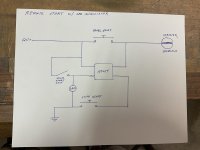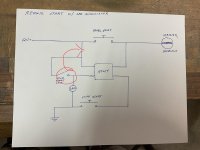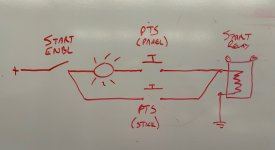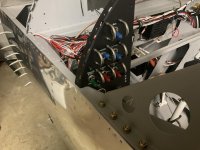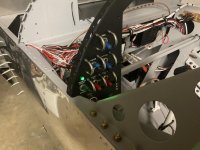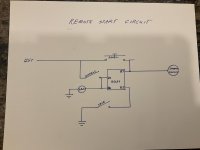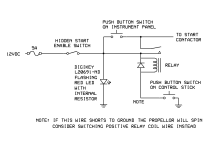Would somebody mind proofing my diagram please.
Some explanation to prevent confusion.
In addition to the standard panel start momentary switch, I want a remote start button using the index button on the stick so I can start on the ground without holding the stick back with my knees.
The panel button is always hot. The stick start button can be turned off by a toggle switch so it can’t accidentally be pushed when flying. Also there is a LED annunciator to let me know if I forget to turn the stick switch off.
The wiring size for the grip requires a relay to activate the starter solenoid. The stick switch goes to ground so the power to activate the relay comes from the starter 12V+.
Thanks in advance.
Some explanation to prevent confusion.
In addition to the standard panel start momentary switch, I want a remote start button using the index button on the stick so I can start on the ground without holding the stick back with my knees.
The panel button is always hot. The stick start button can be turned off by a toggle switch so it can’t accidentally be pushed when flying. Also there is a LED annunciator to let me know if I forget to turn the stick switch off.
The wiring size for the grip requires a relay to activate the starter solenoid. The stick switch goes to ground so the power to activate the relay comes from the starter 12V+.
Thanks in advance.



